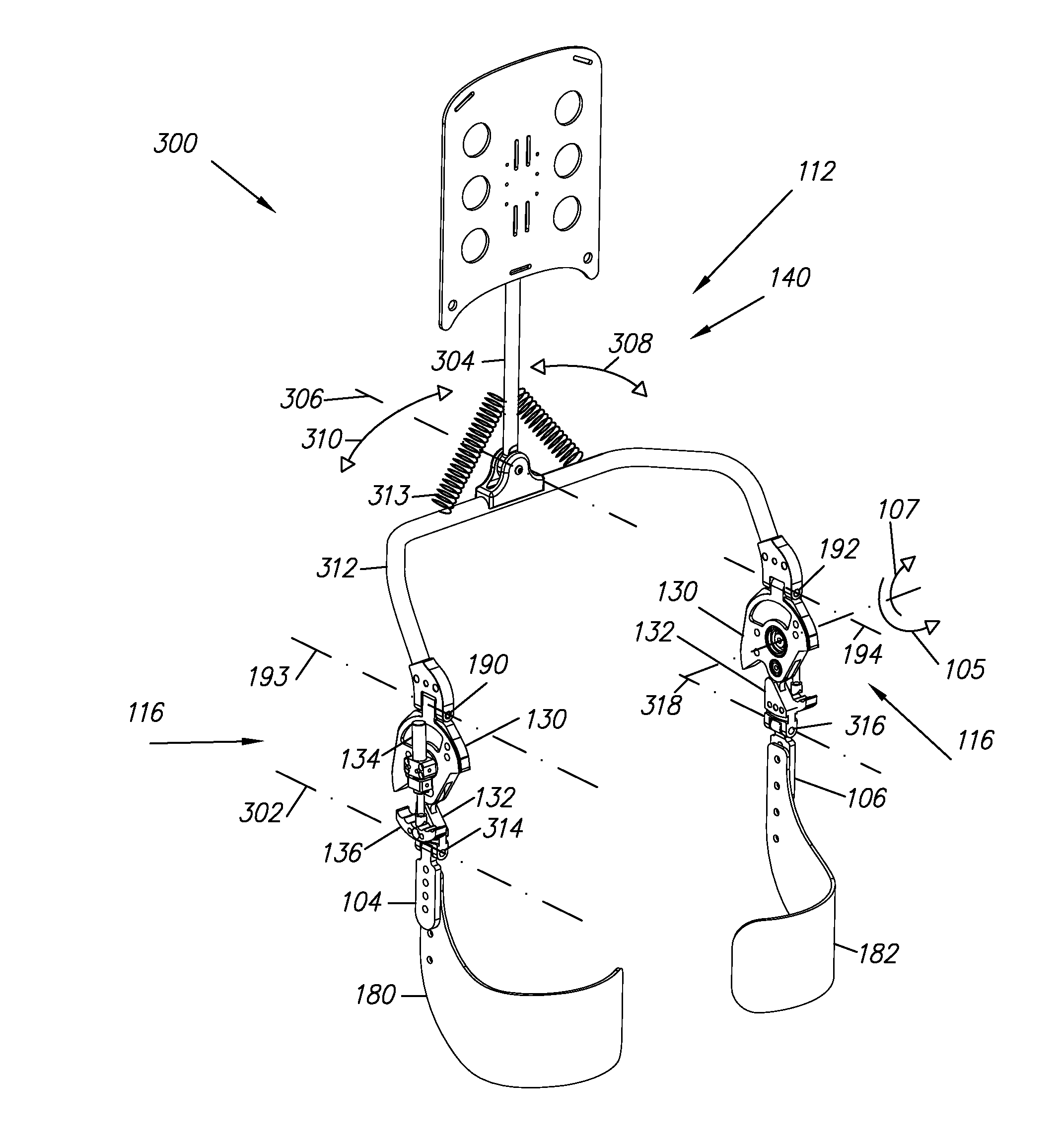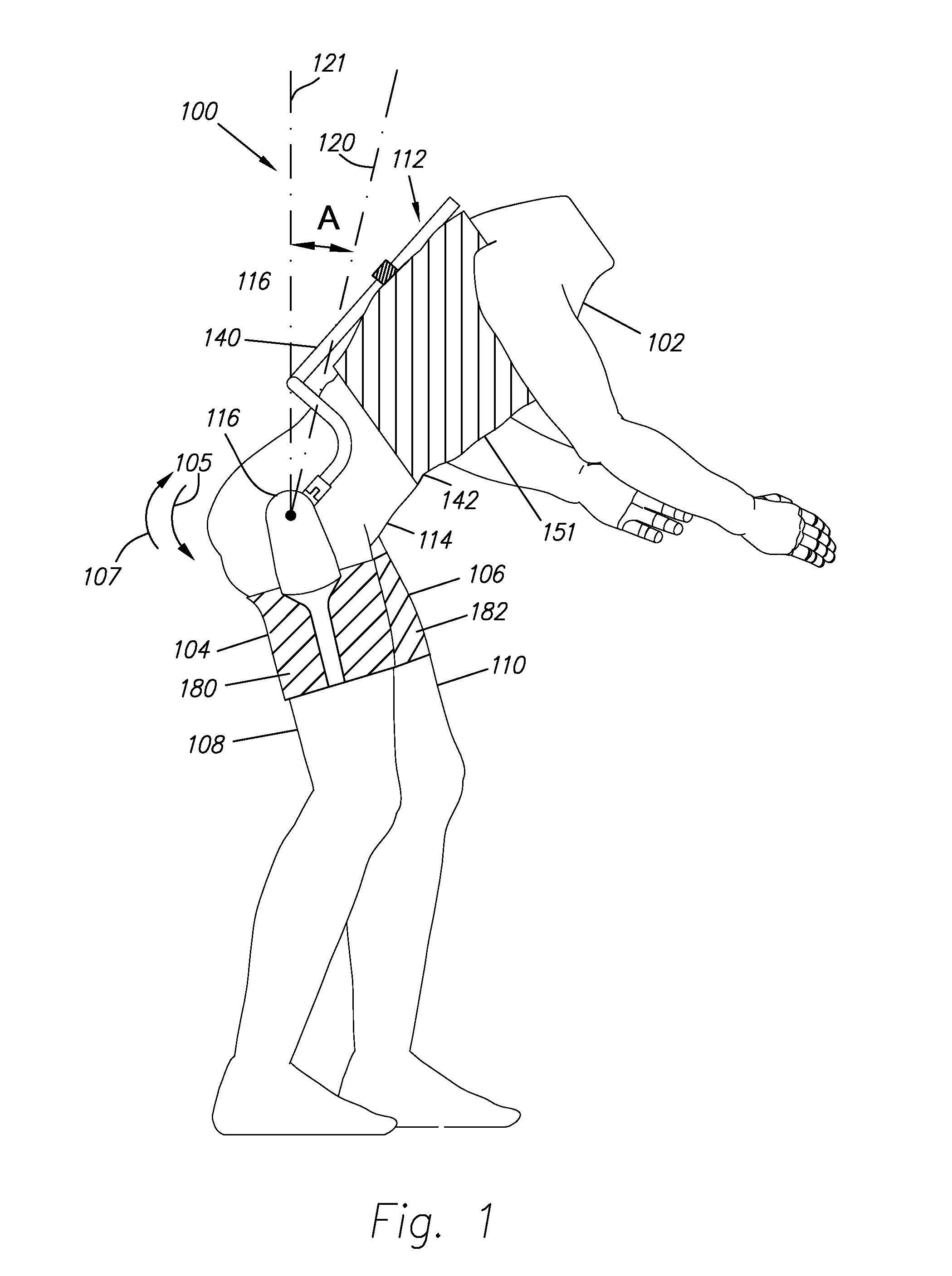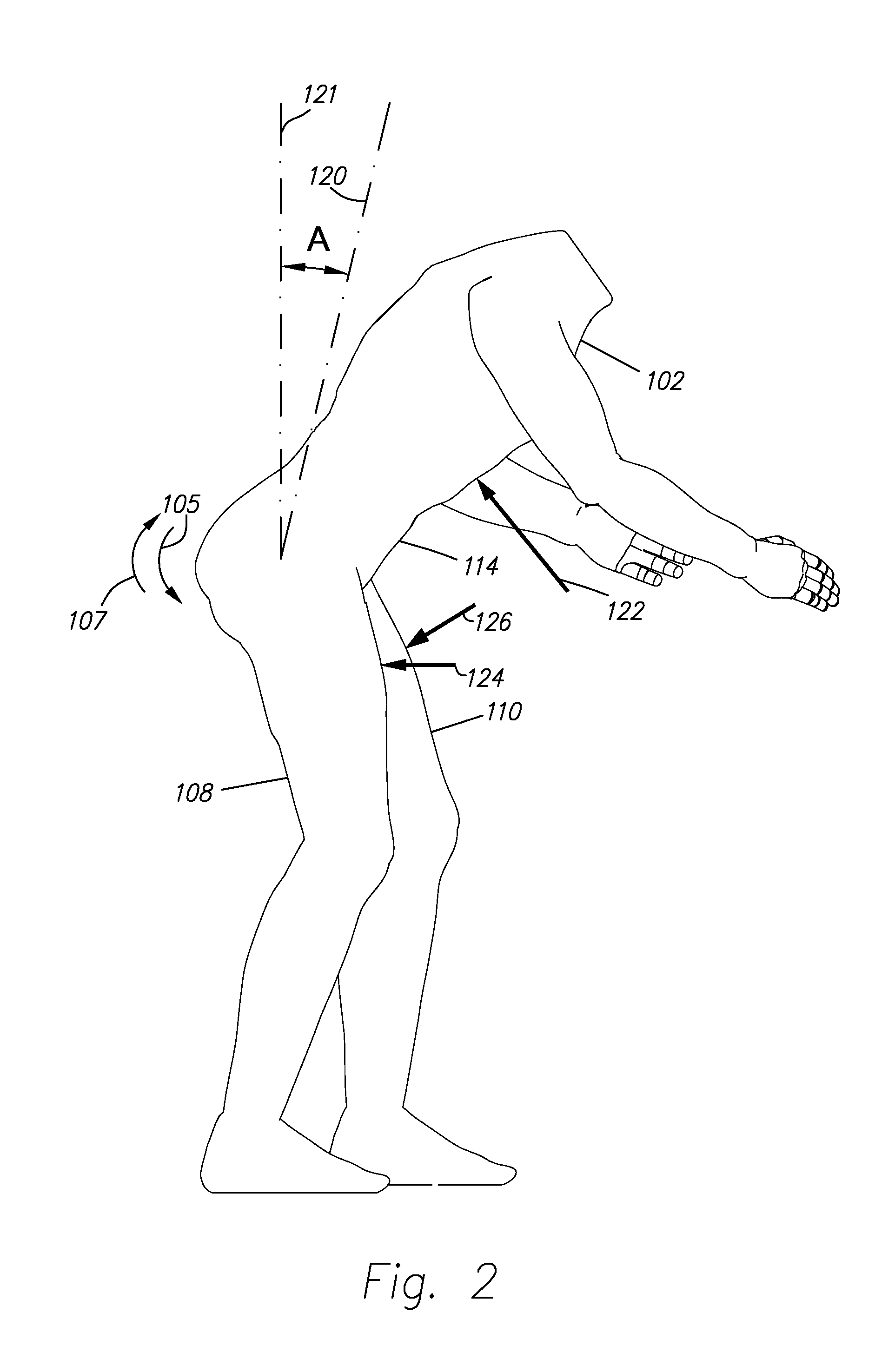Trunk Supporting Exoskeleton and Method of Use
a technology of supporting exoskeleton and trunk, which is applied in the field of supporting devices for the human spine, can solve the problems of not being able to sit comfortably using these passive devices, and not being able to walk comfortably using. to achieve the effect of reducing the muscle force in the wearer's back
- Summary
- Abstract
- Description
- Claims
- Application Information
AI Technical Summary
Benefits of technology
Problems solved by technology
Method used
Image
Examples
Embodiment Construction
[0051]FIG. 1 illustrates a trunk supporting exoskeleton 100 (referred to as exoskeleton 100) which is configured to be worn by a person or wearer. Exoskeleton 100, in addition to other functions, reduces the muscle forces in the wearer's back during forward lumbar flexion. In general, exoskeleton 100 comprises: two thigh links 104 and 106, which are configured to couple to a wearer's thighs 108 and 110; and a supporting trunk 112, which is configured to be coupled to the person's trunk 114. Supporting trunk 112 is rotatably coupled to thigh links 104 and 106, allowing for the flexion and extension along arrows 105 and 107 of thigh links 104 and 106 with respect to supporting trunk 112. Additionally, exoskeleton 100 includes first and second opposing torque generators 116 (only one of which is depicted in FIG. 1), capable of creating torques between supporting trunk 112 and respective first and second thigh links 104 and 106.
[0052]In operation, when a wearer bends forward in the sagi...
PUM
 Login to View More
Login to View More Abstract
Description
Claims
Application Information
 Login to View More
Login to View More - R&D
- Intellectual Property
- Life Sciences
- Materials
- Tech Scout
- Unparalleled Data Quality
- Higher Quality Content
- 60% Fewer Hallucinations
Browse by: Latest US Patents, China's latest patents, Technical Efficacy Thesaurus, Application Domain, Technology Topic, Popular Technical Reports.
© 2025 PatSnap. All rights reserved.Legal|Privacy policy|Modern Slavery Act Transparency Statement|Sitemap|About US| Contact US: help@patsnap.com



